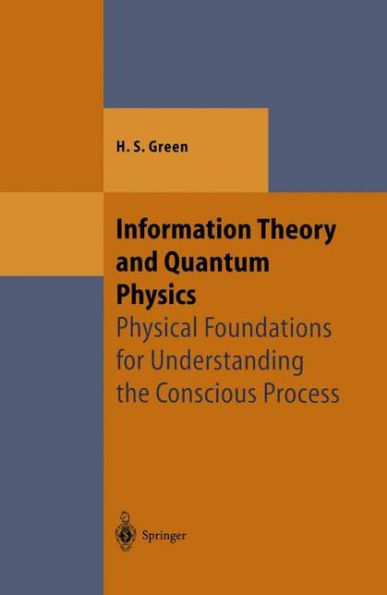Information Theory and Quantum Physics: Physical Foundations for Understanding the Conscious Process
In this book, H. S. Green, a former student of Max Born and well known as an author in physics and in philosophy of science, presents an individual and modern approach to theoretical physics and related fundamental problems. Starting from first principles, the links between physics and information science are unveiled step by step: modern information theory and the classical theory of the Turing machine are combined to create a new interpretation of quantum computability, which is then applied to field theory, gravitation and submicroscopic measurement theory and culminates in a detailed examination of the role of the conscious observer in physical measurements. The result is a highly readable book that unifies a wide range of scientific knowledge and is essential reading for all scientists and philosophers of science interested in the interpretation and the implications of the interaction between information science and basic physical theories.
1113956240
Information Theory and Quantum Physics: Physical Foundations for Understanding the Conscious Process
In this book, H. S. Green, a former student of Max Born and well known as an author in physics and in philosophy of science, presents an individual and modern approach to theoretical physics and related fundamental problems. Starting from first principles, the links between physics and information science are unveiled step by step: modern information theory and the classical theory of the Turing machine are combined to create a new interpretation of quantum computability, which is then applied to field theory, gravitation and submicroscopic measurement theory and culminates in a detailed examination of the role of the conscious observer in physical measurements. The result is a highly readable book that unifies a wide range of scientific knowledge and is essential reading for all scientists and philosophers of science interested in the interpretation and the implications of the interaction between information science and basic physical theories.
109.99
In Stock
5
1

Information Theory and Quantum Physics: Physical Foundations for Understanding the Conscious Process
244
Information Theory and Quantum Physics: Physical Foundations for Understanding the Conscious Process
244Hardcover(2000)
$109.99
109.99
In Stock

Product Details
| ISBN-13: | 9783540665175 |
|---|---|
| Publisher: | Springer Berlin Heidelberg |
| Publication date: | 01/14/2000 |
| Series: | Theoretical and Mathematical Physics |
| Edition description: | 2000 |
| Pages: | 244 |
| Product dimensions: | 6.10(w) x 9.25(h) x 0.02(d) |
From the B&N Reads Blog
